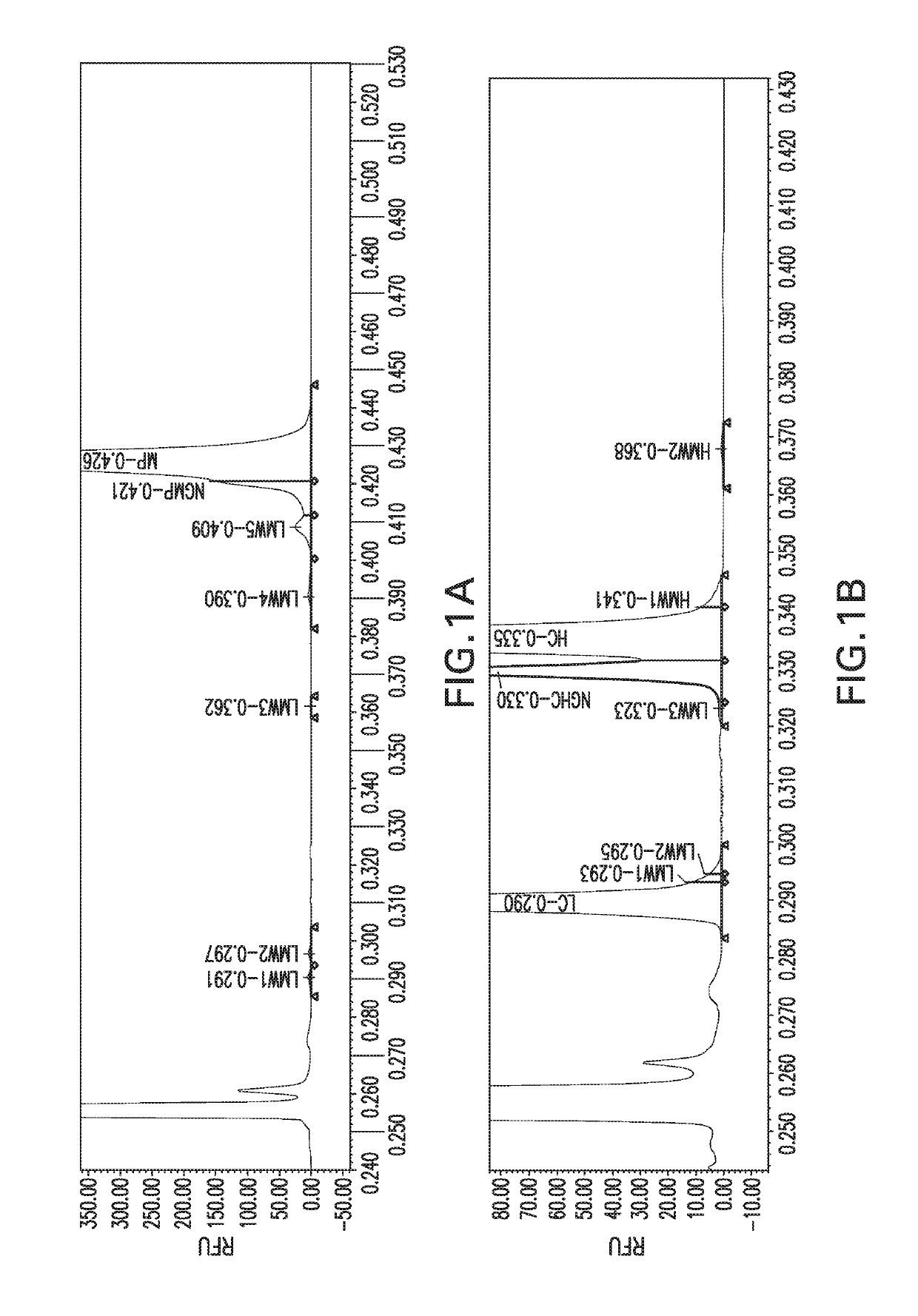Microchip capillary electrophoresis assays and reagents
a microchip and capillary electrophoresis technology, applied in the field of capillary electrophoresis, can solve problems such as prone to assay interference, and achieve the effect of improving the detection of impurities in a protein drug produ
- Summary
- Abstract
- Description
- Claims
- Application Information
AI Technical Summary
Benefits of technology
Problems solved by technology
Method used
Image
Examples
example
Example 1
MCE Assay for Purity and Impurity Analysis of Therapeutic Proteins
Methods and Materials:
[0060]Materials:
[0061]LabChip GXII or LabChip GXII Touch HT and LabChip® HT Protein Express Chip were used for capillary electrophoretic separation and data collection (Perkin Elmer). Non-reducing and reducing denaturing buffers disclosed above were used for the MCE assay.
[0062]Methods:
[0063]Table 1 shows the workflow procedure for preparing a sample for an MCE assay. Briefly, protein samples were diluted to 0.5 mg / ml. 1 μl of either non-reducing (NR) or reducing (R) denaturing buffer and 4 μl of the diluted sample were added to a 96-well plate. The sample was mixed, centrifuged, and heated for 10 minutes at the temperature specified for the product, typically 75° C. The samples were then labeled with 5 μM commercially available dye (for example Dyomics DY-631 NHS Ester). The samples were mixed, centrifuged, and then heated at 35° C. for 30 minutes. The labeled sample was then diluted wi...
PUM
 Login to View More
Login to View More Abstract
Description
Claims
Application Information
 Login to View More
Login to View More - R&D
- Intellectual Property
- Life Sciences
- Materials
- Tech Scout
- Unparalleled Data Quality
- Higher Quality Content
- 60% Fewer Hallucinations
Browse by: Latest US Patents, China's latest patents, Technical Efficacy Thesaurus, Application Domain, Technology Topic, Popular Technical Reports.
© 2025 PatSnap. All rights reserved.Legal|Privacy policy|Modern Slavery Act Transparency Statement|Sitemap|About US| Contact US: help@patsnap.com

